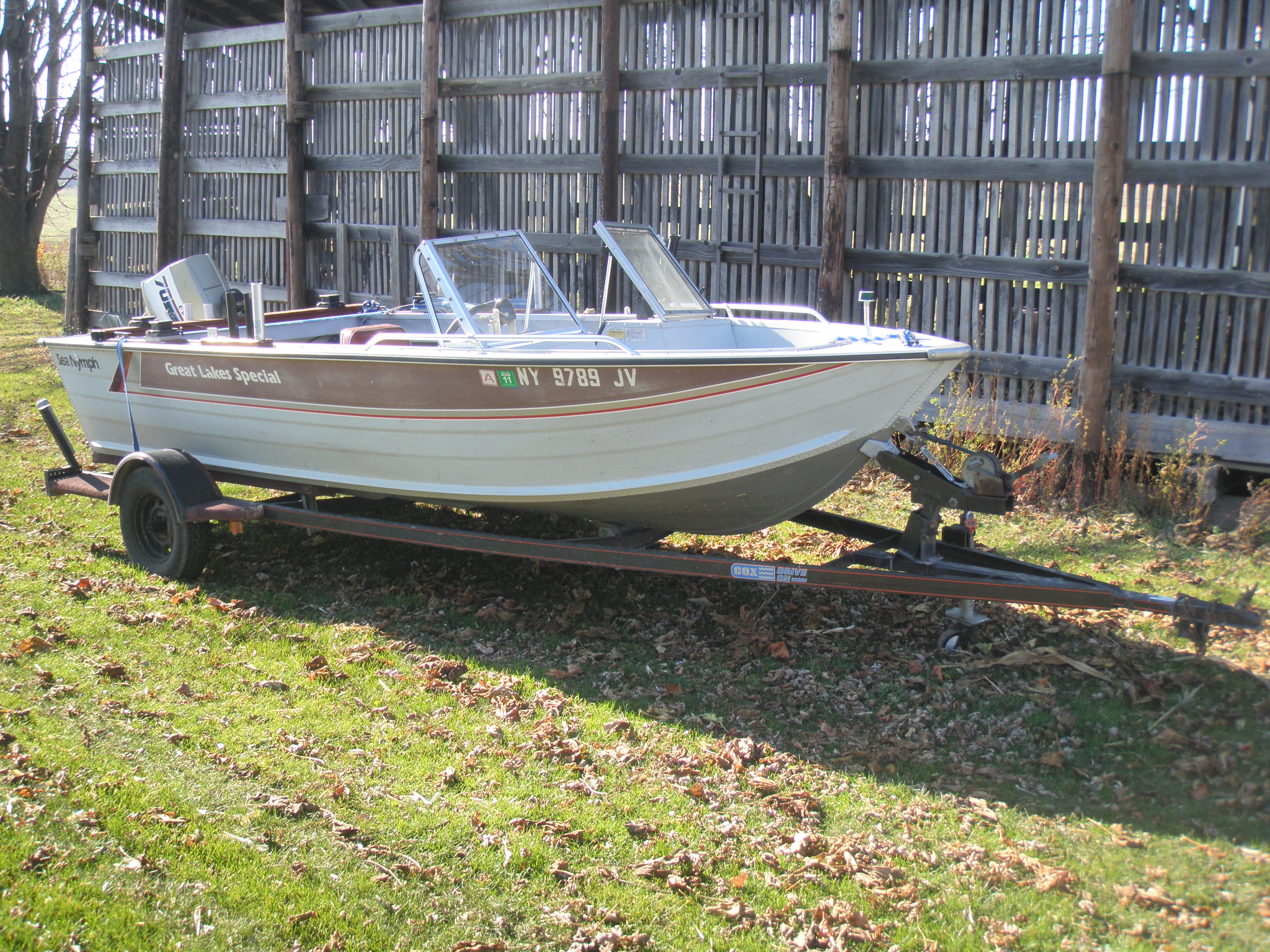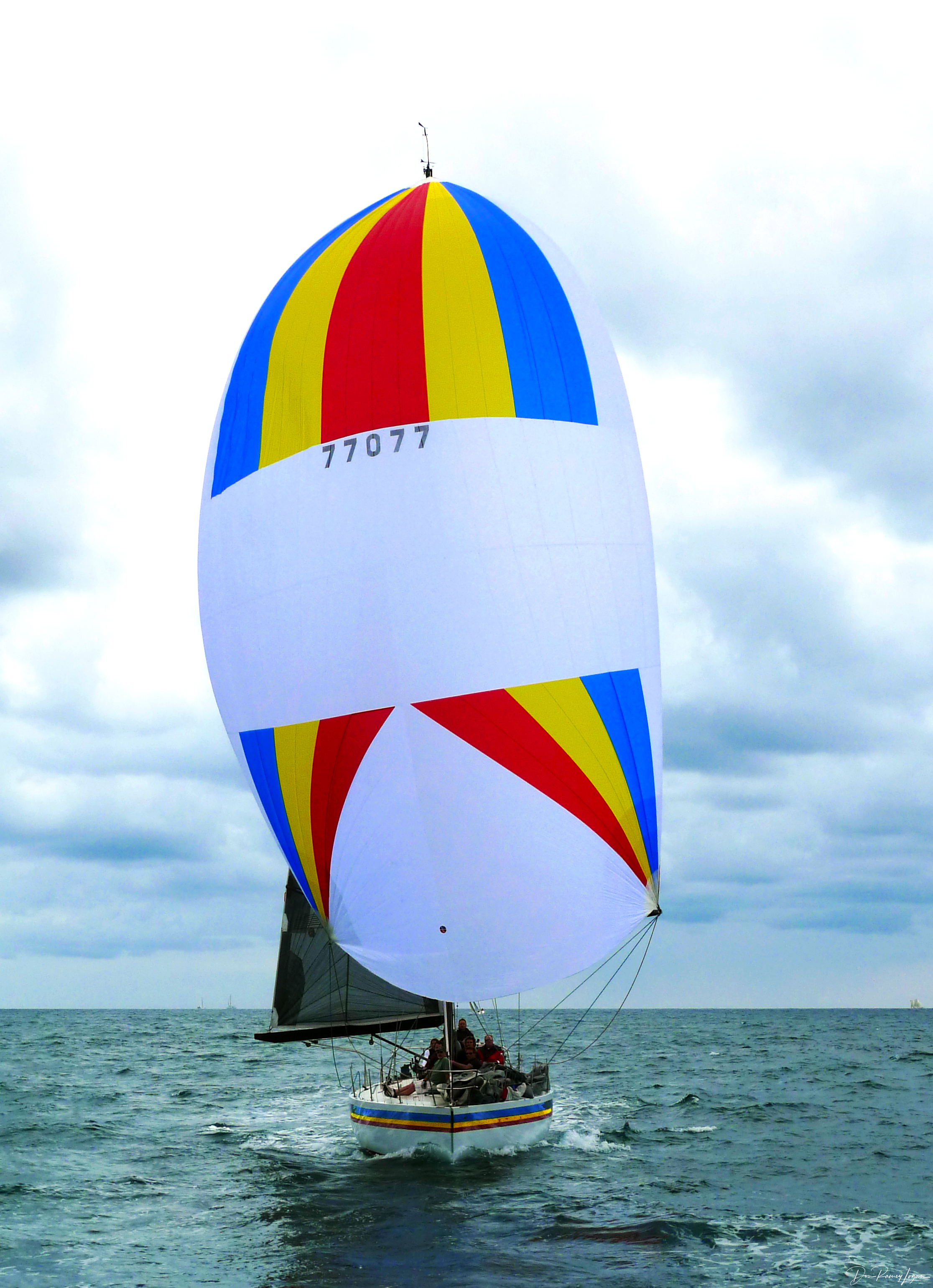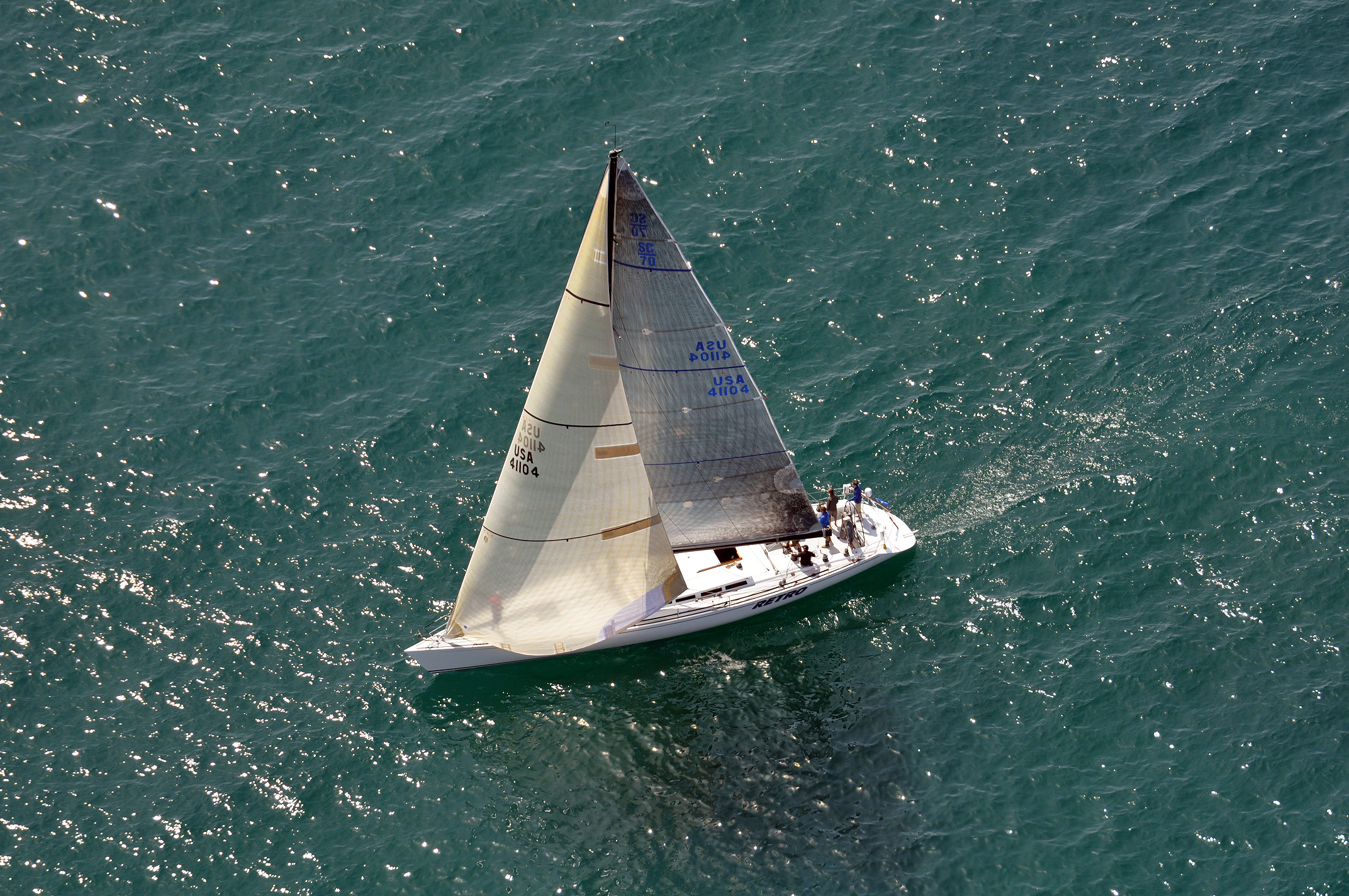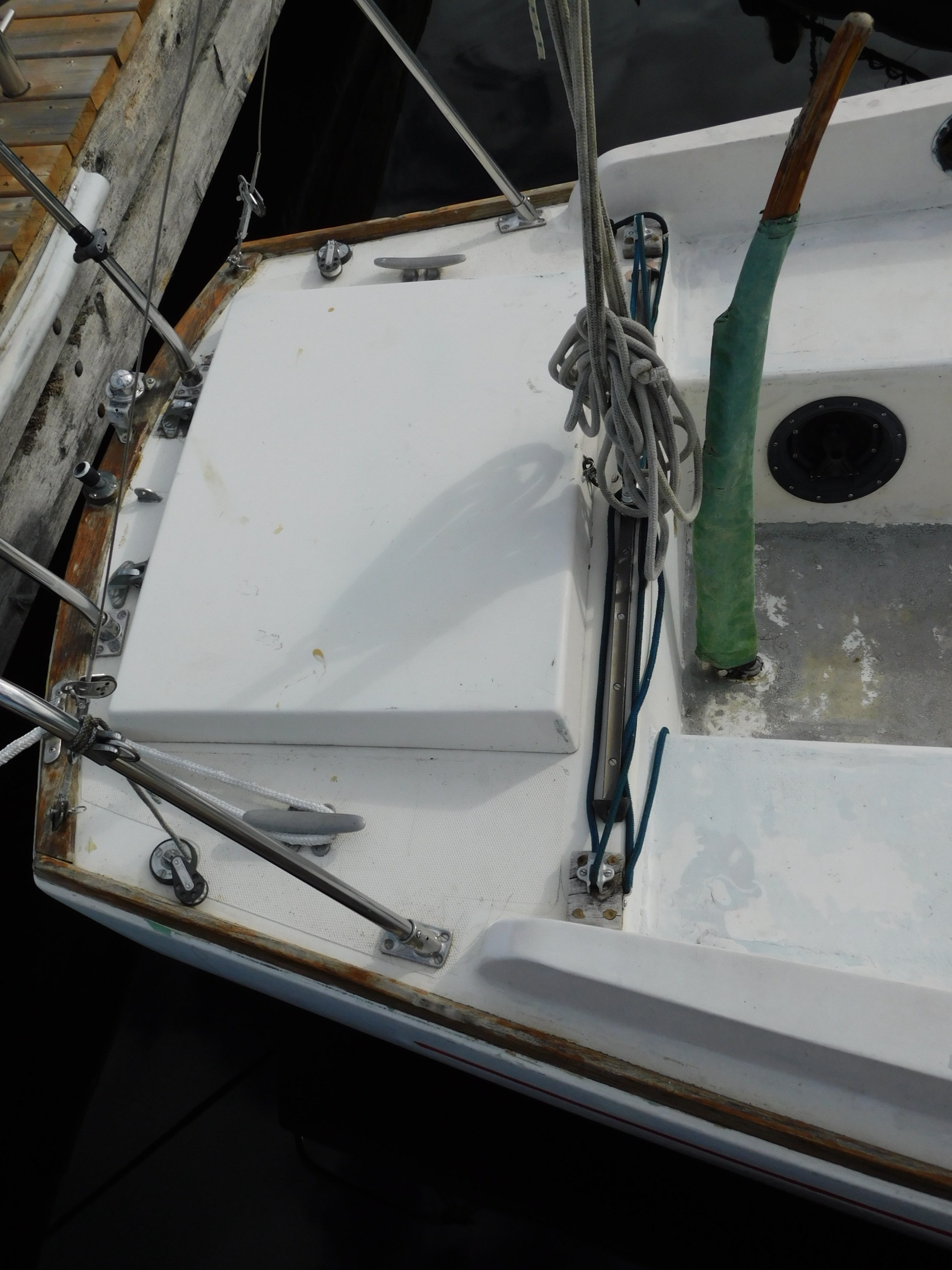|
Herreshoff Bull's Eye
The Herreshoff Bull's Eye or Bullseye, is an American trailerable sailboat that was designed by Nathanael Greene Herreshoff and first built in 1914.Sherwood, Richard M.: ''A Field Guide to Sailboats of North America, Second Edition'', pages 60-61. Houghton Mifflin Company, 1994. The design is derived from the Herreshoff 12½ and was later developed into the Herreshoff Goldeneye. Production The design was originally built out of wood by the Herreshoff Manufacturing Company in the United States. In 1938 the design was given an above-transom tiller and renamed the Fishers Island Sound Bull's Eye. It was also built at the Quincy Adams Yacht Yard, in Quincy, Massachusetts. In 1947 the rights were purchased by Cape Cod Shipbuilding and a new fiberglass version, called the Cape Cod Bull's Eye, was created by the original designer's son, A. Sidney DeWolf Herreshoff. This model includes a cuddy cabin and a modern marconi rig with aluminum spars. While the deck and rigging has ... [...More Info...] [...Related Items...] OR: [Wikipedia] [Google] [Baidu] |
Nathanael Greene Herreshoff
Nathanael Greene Herreshoff (March 18, 1848 – June 2, 1938) was an American naval architect, mechanical engineer, and yacht design innovator. He produced a succession of undefeated America's Cup defenders between 1893 and 1920. Biography Herreshoff was born on March 18, 1848, in Bristol, Rhode Island and was named after General Nathanael Greene. He was one of seven brothers. He graduated from the Massachusetts Institute of Technology in 1870 with a three-year degree in mechanical engineering. After graduation, he took a position with the Corliss Steam Engine Company in Providence, Rhode Island. At the 1876 Centennial Exposition in Philadelphia, Pennsylvania, he oversaw operation of the Corliss Stationary Engine, a , dynamo that powered the exhibition's machinery. In 1878 Herreshoff returned to Bristol where he and one of his brothers, John Brown Herreshoff (1841–1915), who was blind, formed the Herreshoff Manufacturing Company. Nathanael provided the engineering expertise ... [...More Info...] [...Related Items...] OR: [Wikipedia] [Google] [Baidu] |
Cuddy Cabin
A cuddy is a small room or cupboard, particularly on a boat. Sometimes a cuddy refers to a small but cosy hut. The origin of the term is not clear. Cuddy was in use in colonial America as early as 1655. The term may derive from the Dutch ''kajuit'', meaning a small cabin, or from the French ''cahute'', meaning a hut. Nautical uses The term cuddy is used particularly in nautical contexts. In the 19th century, it referred to a saloon cabin at the stern of immigrant ships, where wealthy immigrants could travel in greater comfort than the steerage passengers below.John Wilson (2012The voyage out - Cabin and steerage Te Ara - the Encyclopedia of New Zealand. Updated 13 July 2012. A cuddy boat is a boat with a small shelter cabin with maybe a small head A head is the part of an organism which usually includes the ears, brain, forehead, cheeks, chin, eyes, nose, and mouth, each of which aid in various sensory functions such as sight, hearing, smell, and taste. So ... [...More Info...] [...Related Items...] OR: [Wikipedia] [Google] [Baidu] |
Maine
Maine ( ) is a U.S. state, state in the New England region of the United States, and the northeasternmost state in the Contiguous United States. It borders New Hampshire to the west, the Gulf of Maine to the southeast, and the Provinces and territories of Canada, Canadian provinces of New Brunswick and Quebec to the northeast and northwest, and shares a maritime border with Nova Scotia. Maine is the largest U.S. state, state in New England by total area, nearly larger than the combined area of the remaining five states. Of the List of states and territories of the United States, 50 U.S. states, it is the List of U.S. states and territories by area, 12th-smallest by area, the List of U.S. states and territories by population, 9th-least populous, the List of U.S. states by population density, 13th-least densely populated, and the most rural. Maine's List of capitals in the United States, capital is Augusta, Maine, Augusta, and List of municipalities in Maine, its most populous c ... [...More Info...] [...Related Items...] OR: [Wikipedia] [Google] [Baidu] |
Florida
Florida ( ; ) is a U.S. state, state in the Southeastern United States, Southeastern region of the United States. It borders the Gulf of Mexico to the west, Alabama to the northwest, Georgia (U.S. state), Georgia to the north, the Atlantic Ocean to the east, the Straits of Florida to the south, and The Bahamas to the southeast. About two-thirds of Florida occupies a peninsula between the Gulf of Mexico and the Atlantic Ocean. It has the List of U.S. states by coastline, longest coastline in the contiguous United States, spanning approximately , not including its many barrier islands. It is the only state that borders both the Gulf of Mexico and the Atlantic Ocean. With a population of over 23 million, it is the List of U.S. states and territories by population, third-most populous state in the United States and ranks List of states and territories of the United States by population density, seventh in population density as of 2020. Florida spans , ranking List of U.S. states ... [...More Info...] [...Related Items...] OR: [Wikipedia] [Google] [Baidu] |
Boat Trailer
A boat trailer is a trailer designed to launch, retrieve, carry and sometimes store boats, so the boat can be road-transported around by towing behind a motor vehicle. When launching and retrieving the boat, the trailer is often submerged in water via a boat ramp, so the boat can winched on and off the trailer in a controlled fashion by still maintaining buoyancy while changing the draught. As of 2024, the cost of a boat trailer can be anywhere between $700 to $8000, depending on the size and number of axles the trailer has. Commercial boat trailers Commercial hydraulic boat trailers are used by marinas, boat yards, boat haulers, boat dealers and boat builders. Generally, this type of trailer is not used for boat storage. Self-propelled Self-propelled boat movers are not strictly trailers, but hydraulically operated boat movers, with their own tractor unit. They share all of the features of hydraulic boat trailers. Non-commercial boat trailers This type of trailer is ... [...More Info...] [...Related Items...] OR: [Wikipedia] [Google] [Baidu] |
Spinnaker
A spinnaker is a sail designed specifically for sailing off the wind on courses between a Point of sail#Reaching, reach (wind at 90° to the course) to Point of sail#Running downwind, downwind (course in the same direction as the wind). Spinnakers are constructed of lightweight fabric, usually nylon, and are often brightly colored. They may be designed to perform best as either a reaching or a running spinnaker, by the shaping of the panels and seams. They are attached at only three points and said to be ''flown''. Etymology Some dictionaries suggest that the origin of the word could be traced to the first boat to commonly fly a spinnaker, a yacht called ''Sphinx'', mispronounced as ''Spinx''. ''Spinnaker'' entry in The Concise Oxford Dictionary of English Etymology (1996). Oxford University PressAccording to encyclopedia.com Both retrieved on 20 July 2008. ''Sphinx'' first set her spinnaker in the Solent in 1865, and the first recorded use of the word was in 1866 in the Augu ... [...More Info...] [...Related Items...] OR: [Wikipedia] [Google] [Baidu] |
Genoa (sail)
A genoa sail is a type of large jib or staysail that extends past the mast and so overlaps the main sail when viewed from the side, sometimes eliminating it. It was originally called an "overlapping jib" and later a genoa jib. It is used on single-masted sloops and twin-masted boats such as yawls and ketches. Its larger surface area increases the speed of the craft in light to moderate winds; in high wind, a smaller jib is usually substituted, and downwind a spinnaker may be used. Definition The term ''jib'' is the generic term for any of an assortment of ''headsails''. The term ''genoa'' (or genny) refers to a type of jib that is larger than 100% of the foretriangle, which is the triangular area formed by the point at which the stay intersects the mast (sailing), mast, and deck (ship), deck or bowsprit, and the line where the mast (sailing), mast intersects deck (ship), deck at the rail. Colloquially the term is sometimes used interchangeably with ''jib''. A working jib is no la ... [...More Info...] [...Related Items...] OR: [Wikipedia] [Google] [Baidu] |
Lazarette
The lazarette or lazaret (sometimes lazaretto) of a boat is an area near or aft of the cockpit. The word is similar to and probably derived from lazaretto. A lazarette is usually a storage locker used for gear or equipment a sailor or boatswain would use around the decks on a sailing vessel. It is typically found below the weather deck in the stern of the vessel and is accessed through a cargo hatch (if accessed from the main deck) or a doorway (if accessed from below decks). The equipment usually stored in a lazarette would be spare lines, sails, sail repair, line and cable splicing repair equipment, fenders, bosun chair, spare blocks, tools, and other equipment. The name derives from the Biblical story of Saint Lazarus, who in Christian belief was raised from the dead out of the tomb by Jesus Jesus (AD 30 or 33), also referred to as Jesus Christ, Jesus of Nazareth, and many Names and titles of Jesus in the New Testament, other names and titles, was a 1s ... [...More Info...] [...Related Items...] OR: [Wikipedia] [Google] [Baidu] |
Tiller
A tiller or till is a lever used to steer a vehicle. The mechanism is primarily used in watercraft, where it is attached to an outboard motor, rudder post, rudder post or stock to provide leverage in the form of torque for the helmsman to turn the rudder. A tiller may also be used in vehicles outside of water, and was seen in early automobiles. On vessels, a tiller can be used by the helmsman directly pulling or pushing it, but it may also be moved remotely using tiller lines or a ship's wheel. Rapid or excessive movement of the tiller results in an increase in drag and will result in braking or slowing the boat. Description A tiller is a lever used to steer a vehicle. It provides leverage in the form of torque to turn the device that changes the direction of the vehicle, such as a rudder on a watercraft or the surface wheels on a wheeled vehicle. A tiller can be used by directly pulling or pushing it, but it may also be moved remotely using a whipstaff, tiller lines, or a sh ... [...More Info...] [...Related Items...] OR: [Wikipedia] [Google] [Baidu] |
Transom (nautical)
In some boats and ships, a transom is the aft transverse surface of the hull that forms the stern of a vessel. Historically, they are a development from the canoe stern (or "double-ender") wherein which both bow and stern are pointed. Transoms add both strength and width to the stern. They may be flat or curved and they may be vertical, raked forward (known as retroussé), or raked aft. In small boats and yachts, this flat termination of the stern is typically above the waterline, but large commercial vessels often exhibit vertical transoms that dip slightly beneath the water. On cruising boats, a counter stern may be truncated to form a "truncated counter stern", in which there is a part of the stern that approximates a transom. Although that standard stern transom is typically vertical, they may be raked such that there is an overhang above the water, as at the bow. A reverse transom is angled from the waterline forwards. On smaller boats such as dinghies, transoms may be ... [...More Info...] [...Related Items...] OR: [Wikipedia] [Google] [Baidu] |
Raked Stem
The stem is the most forward part of a boat or ship's bow and is an extension of the keel itself. It is often found on wooden boats or ships, but not exclusively. Description The stem is the curved edge stretching from the keel below, up to the gunwale of the boat. It is part of the physical structure of a wooden boat or ship that gives it strength at the critical section of the structure, bringing together the port and starboard side planks of the hull. Plumb and raked stem There are two styles of stems: ''plumb'' and ''raked''. When the stem comes up from the water, if it is perpendicular to the waterline it is "plumb". If it is inclined at an angle to the waterline it is "raked". (For example, "The hull is single decked and characterized by a plumb stem, full bows, straight keel, moderate deadrise, and an easy turn of bilge.") Stemhead Because the stem is very sturdy, the top end of it may have something attached, either ornamental or functional in nature. On small ... [...More Info...] [...Related Items...] OR: [Wikipedia] [Google] [Baidu] |
Teak
Teak (''Tectona grandis'') is a tropical hardwood tree species in the family Lamiaceae. It is a large, deciduous tree that occurs in mixed hardwood forests. ''Tectona grandis'' has small, fragrant white flowers arranged in dense clusters (panicles) at the end of the branches. These flowers contain both types of reproductive organs ( perfect flowers). The large, papery leaves of teak trees are often hairy on the lower surface. Teak wood has a leather-like smell when it is freshly milled and is particularly valued for its durability and water resistance. The wood is used for boat building, exterior construction, veneer, furniture, carving, turnings, and various small projects. ''Tectona grandis'' is native to south and southeast Asia, mainly Bangladesh, India, Indonesia, Malaysia, Myanmar, Thailand, and Sri Lanka, but is naturalised and cultivated in many countries in Africa and the Caribbean. Myanmar's teak forests account for nearly half of the world's naturally occurring teak. ... [...More Info...] [...Related Items...] OR: [Wikipedia] [Google] [Baidu] |






